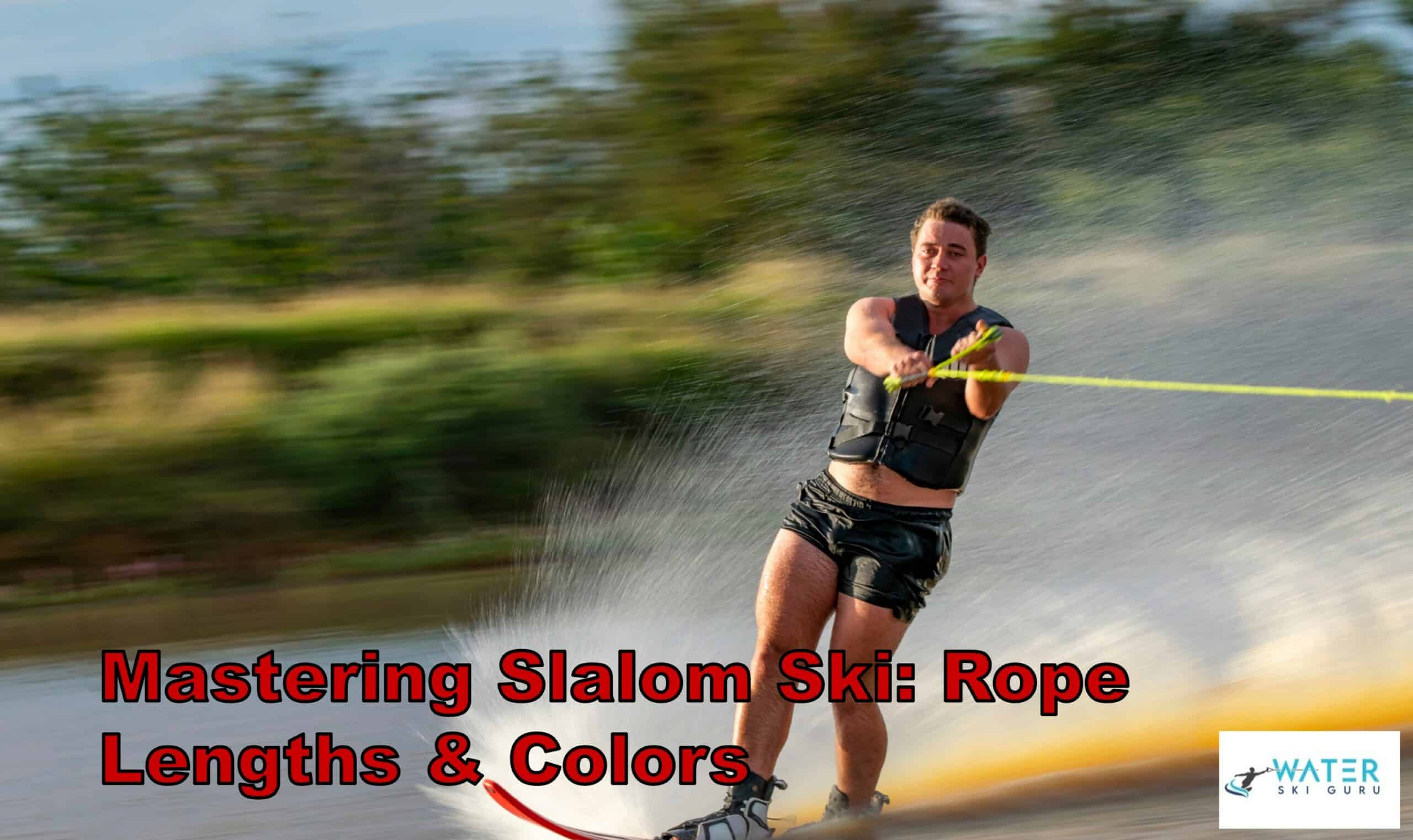As a seasoned slalom skier, I can attest to the thrill and excitement that comes with mastering the course. One of the crucial elements that determine the level of difficulty of the slalom course is the rope length.
Did you know that the world record for the longest slalom ski rope length is 43 feet? This statistic alone shows the level of skill and precision required to navigate through the course successfully.
In this article, I will guide you through the world of slalom ski rope lengths and colors. We will delve into the tournament scoring system, the different rope length options, and the colors that indicate the overall length of the rope.
As a skier who has spent numerous hours on the water, I understand the importance of mastering the rope length to improve your performance and increase your score. Whether you’re a beginner or a seasoned pro, this article will provide you with the necessary information to take your slalom skiing to the next level.
Tournament Scoring System
I can’t stress enough how important it is to understand the tournament scoring system, as it’s the key to winning competitions and advancing in the sport of slalom water skiing.
The scoring system is based on boat speed, rope length, and turn buoys. The boat speed requirements vary depending on the skier’s skill level and the competition level, but typically, it ranges from 55 km/h to 58 km/h. The skier’s objective is to ski through the course and clear as many turn buoys as possible while maintaining the boat speed and rope length.
The scoring criteria are based on the number of turn buoys cleared, the boat speed, and the rope length. The skier earns points for each turn buoy they clear, and the more buoys they clear, the higher their score. If the skier falls or misses a buoy, they receive zero points for that pass.
The boat speed is timed to ensure accuracy, and the perfect 58 km/h pass takes 16.08 seconds from entry to exit gates. The acceptable tolerance in competition is 16.12 seconds on the slow side and 16.04 seconds on the fast side.
Understanding the tournament scoring system is crucial for any slalom water skier looking to excel in competitions and take their skills to the next level.
Rope Length and Color Chart
The chart displays the different loop colors and corresponding feet off for each section of the tournament rope. Understanding rope tension is crucial in selecting the right rope length for your skill level and boat speed. As a slalom skier, you should aim to maintain a consistent tension on the rope throughout the course. This ensures that you have maximum control and stability as you pass through the turn buoys.
In addition to rope length, selecting the right handle grip is also important in mastering slalom skiing. Your grip should be firm but relaxed, allowing you to maintain control of the rope without causing excessive strain on your hands or arms. It’s also important to adjust your skiing technique to changing water conditions, such as wind or choppy water.
Analyzing your ski technique through video playback can help you identify areas for improvement and make adjustments to your approach. By mastering these skills and utilizing the information provided in the chart, you can improve your performance and become a more skilled slalom skier.
Tips for Mastering the Course
Analyzing video playback and studying the course layout can greatly enhance your performance in slalom skiing. Proper body positioning is key to mastering the course. Keep your weight forward and your body aligned with the direction of the boat. This allows for better balance and control throughout the turns.
Timing techniques are also crucial. Focus on the timing of your turns and approach to the buoys. Practice entering the turns as early as possible, and aim to complete the turn before reaching the buoy. This will allow for a smoother transition and greater speed throughout the course.
Equipment recommendations can also improve your performance. Invest in high-quality slalom skis and a rope that meets tournament standards. Practice drills such as shortening the rope length and increasing boat speed can also help to build endurance and improve overall performance.
Remember to take breaks and stretch regularly to avoid injuries. With practice and dedication, mastering slalom skiing is achievable. Keep analyzing your performance, adjusting your approach, and pushing yourself to improve.
Frequently Asked Questions
How do slalom ski tournaments determine the order of skiers?
The scoring system determines the order of skiers in slalom ski tournaments. Skiers with the highest scores ski last. In case of a tie, tiebreaker rules based on the number of buoys cleared and time taken are used to determine the order.
What are some common mistakes that beginner slalom skiers make?
Like a fledgling bird learning to fly, beginner slalom skiers often struggle to find their balance. Proper stance and edge control are key to avoiding common mistakes and achieving mastery on the water.
How do different water and weather conditions affect slalom ski performance?
The impact of water and weather conditions on slalom ski performance is significant. Wearing a wetsuit can provide advantages like improved buoyancy and reduced drag. Wind direction can affect the water’s surface, causing choppy conditions and making turns more challenging.
Are there any specific stretches or exercises that can improve slalom ski technique?
Improving slalom ski technique requires a combination of Yoga Poses, Strength Training, Breathing Techniques, and Flexibility Exercises. Think of it like molding clay- each stretch and exercise shapes your body like a sculptor.
How do slalom skiers communicate with their boat driver during a competition?
Slalom skiers communicate with their boat driver using hand signals and headset communication during competition. Clear communication is crucial for successfully navigating the course and achieving the desired score. As an experienced skier, I rely on effective communication with my driver for optimal performance.
Conclusion
In conclusion, mastering slalom skiing requires not only skill and precision but also knowledge of the tournament scoring system and the rope lengths and colors.
As an experienced skier, I know the importance of understanding the different rope lengths and the challenge they pose to the skier. The rope length chart provided in this article is an invaluable resource for any skier looking to improve their game.
Remember, the key to mastering the slalom course is practice and patience. Don’t be afraid to challenge yourself with shorter rope lengths and push your limits. With the right technique and determination, you can conquer any slalom course.
So grab your skis, study the chart, and hit the water with confidence. Happy skiing!

